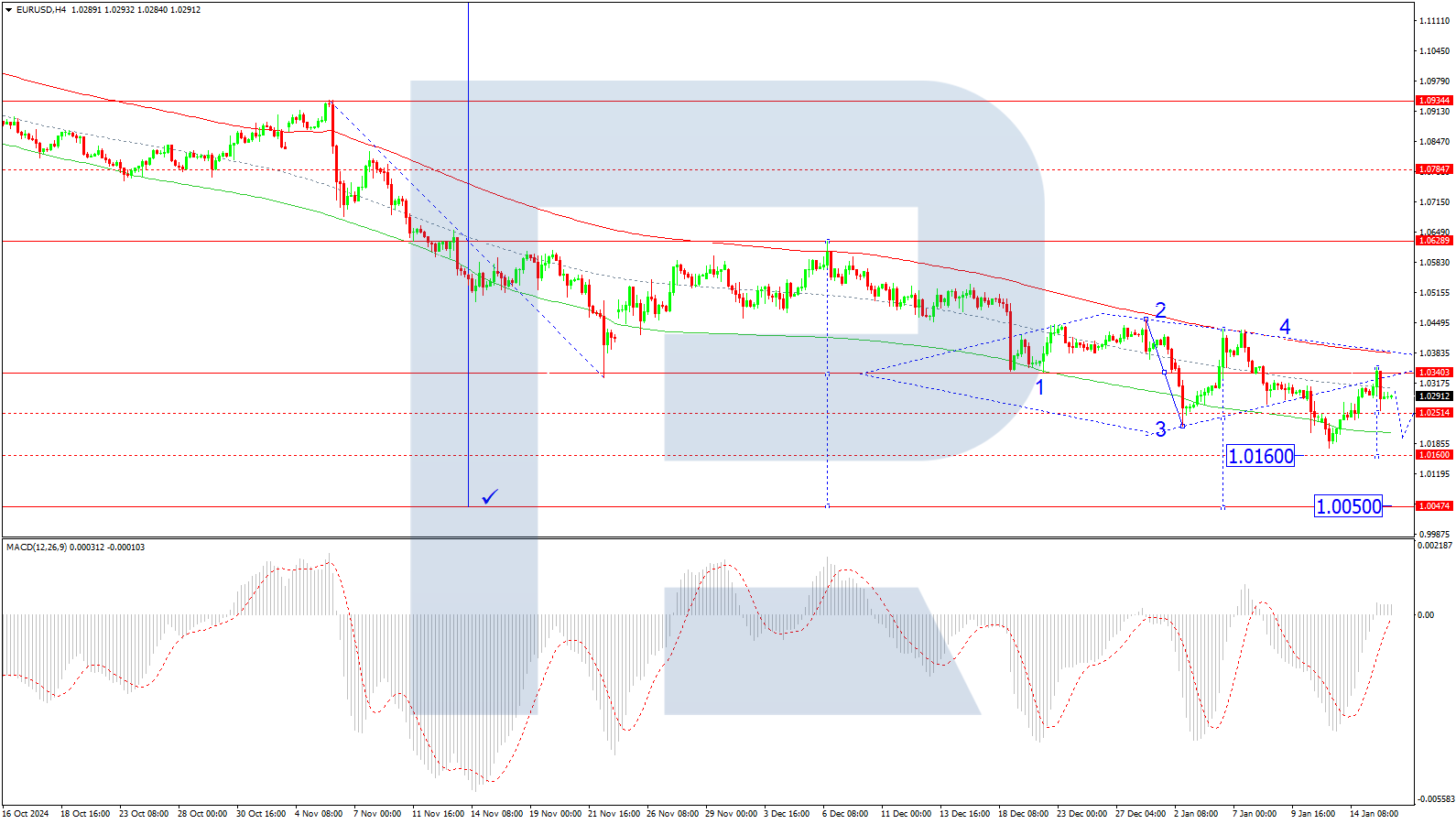EUR/USD stabilises as US inflation cools without major surprises
|
Following a nervous session last night, the EUR/USD pair is trading near 1.0285 on Thursday morning. The market is now stabilising.
Key developments influencing EUR/USD
US inflation data showed moderate growth, aligning with expectations. As forecast, the Consumer Price Index (CPI) rose by 0.4% m/m in December, maintaining an annualised rate of 2.9% y/y. Core CPI, excluding volatile goods, offered a slight surprise with a ‘cooling’ effect. It increased by 0.2% m/m (3.2% y/y), below the forecasted 0.3% m/m (3.3% y/y).
US Treasury yields declined, negatively impacting the USD. However, the currency market’s reaction remained subdued.
The release of inflation statistics prompted investors to modestly revise their expectations for Federal Reserve interest rate cuts in 2025. Lending costs are now expected to drop by an average of 37 basis points throughout the year.
The USD demonstrated resilience in January and performed better than in December. If this trend continues, the current week will mark the fourth consecutive week of USD strengthening.
In contrast, European statistics provided little support for the euro. Industrial production in the Eurozone rose by 0.2% m/m in November, following stagnation in October. However, year-on-year figures revealed a deeper contraction, with production falling by 1.9%.
Investors now await key US economic data, including December retail sales and weekly jobless claims, which could further influence the pair.
Technical analysis of EUR/USD
On the H4 chart, EUR/USD completed a corrective wave to 1.0350 before forming a new downward impulse to 1.0258. The current outlook suggests the potential development of a new downward wave targeting 1.0160. After reaching this level, a corrective move towards 1.0250 is likely, with a possible further decline to 1.0050. This scenario is supported by the MACD indicator, with its signal line below zero and trending downwards, indicating the likelihood of renewed lows.
On the H1 chart, the pair formed a downward impulse to 1.0258, with a correction expected to target 1.0300. Once this level is reached, the downward wave may resume, aiming for 1.0210 and potentially extending to 1.0160. The Stochastic oscillator supports this outlook, with its signal line below the 50 mark and heading towards 20, suggesting continued downward momentum.
Conclusion
EUR/USD remains under pressure as US inflation data bolstered the dollar’s resilience. While technical indicators point to further downside potential, the pair’s movements will largely depend on upcoming US retail sales and jobless claims data, as well as the overall strength of the USD. On the euro’s side, weak industrial production data highlights ongoing challenges in the eurozone, adding further weight to the bearish outlook.
Information on these pages contains forward-looking statements that involve risks and uncertainties. Markets and instruments profiled on this page are for informational purposes only and should not in any way come across as a recommendation to buy or sell in these assets. You should do your own thorough research before making any investment decisions. FXStreet does not in any way guarantee that this information is free from mistakes, errors, or material misstatements. It also does not guarantee that this information is of a timely nature. Investing in Open Markets involves a great deal of risk, including the loss of all or a portion of your investment, as well as emotional distress. All risks, losses and costs associated with investing, including total loss of principal, are your responsibility. The views and opinions expressed in this article are those of the authors and do not necessarily reflect the official policy or position of FXStreet nor its advertisers.
